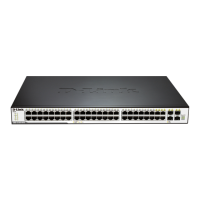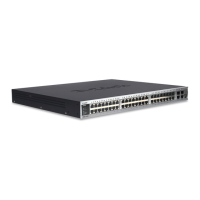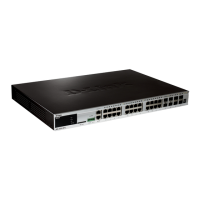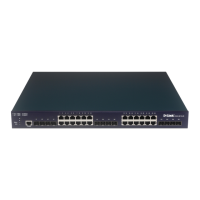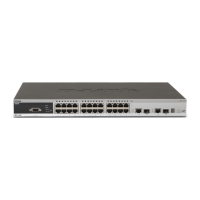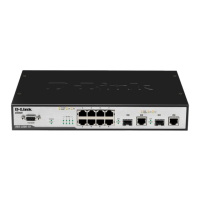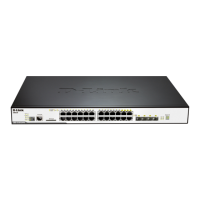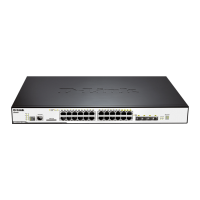xStack® DGS-3120 Series Layer 3 Managed Gigabit Ethernet Switch Web UI Reference Guide
271
IPv6 - Select to allow the user to enter a range of IPv6 addresses for this rule.
Action Select Permit to specify that the packets that match the access profile are forwarded by
the Switch, according to any additional rule added (see below).
Select Deny to specify that the packets that match the access profile are not forwarded
by the Switch and will be filtered.
Select Mirror to specify that packets that match the access profile are mirrored to a port
defined in the mirror port section. Port Mirroring must be enabled and a target port must
Option After selecting the Permit action, the user can select one of the following options:
Change 1p Priority - Enter the 1p priority value.
Replace DSCP - Enter the DSCP value.
Replace ToS Precedence - Enter the ToS Precedence value.
Apply To
Use the drop-down menu to select and enter the information that this rule will be applied
to.
Ports – Enter a port number or a port range.
VLAN Name – Enter a VLAN name.
VLAN ID – Enter a VLAN ID.
Click the Apply button to accept the changes made.
NOTE: The Switch will use one minimum mask to cover all the terms that user input, however, some
extra bits may also be masked at the same time. To optimize the ACL profile and rules, please
use manual configuration.
Access Profile List
Access profiles allow you to establish criteria to determine whether the Switch will forward packets based on the
information contained in each packet's header.
To view Access Profile List window, click ACL > Access Profile List as shown below:
The Switch supports four Profile Types, Ethernet ACL, IPv4 ACL, IPv6 ACL, and Packet Content ACL.
Creating an access profile is divided into two basic parts. The first is to specify which part or parts of a frame the
Switch will examine, such as the MAC source address or the IP destination address. The second part is entering
the criteria the Switch will use to determine what to do with the frame. The entire process is described below in two
parts.
Users can display the currently configured Access Profiles on the Switch.
Figure 7-2 Access Profile List window
Click the Add ACL Profile button to add an entry to the Access Profile List.
Click the Delete All button to remove all access profiles from this table.
Click the Show Details button to display the information of the specific profile ID entry.
Click the Add/View Rules button to view or add ACL rules within the specified profile ID.
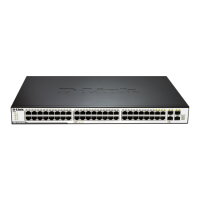
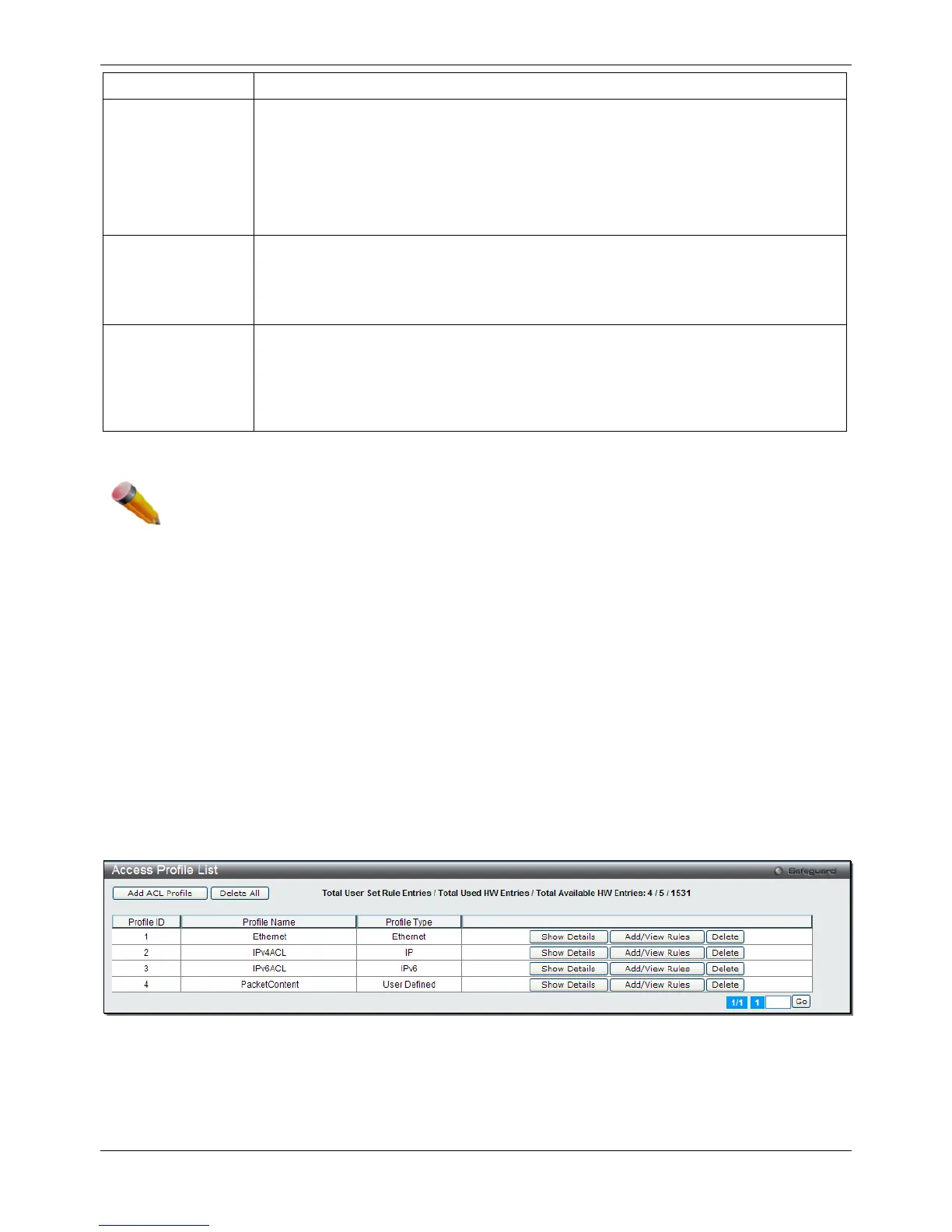